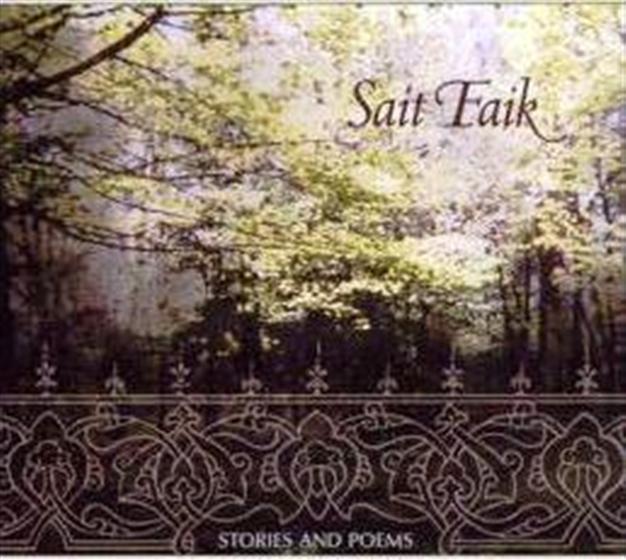‘Sleeping in the Forest: Stories and Poems’ by Sait Faik
William Armstrong - william.armstrong@hdn.com.tr
 ‘Sleeping in the Forest: Stories and Poems’ by Sait Faik (ed. Talat S. Halman) (Syracuse University Press, 2004, $20, pp 199)
‘Sleeping in the Forest: Stories and Poems’ by Sait Faik (ed. Talat S. Halman) (Syracuse University Press, 2004, $20, pp 199)
Sait Faik Abasıyanık is often described as the dean of the Turkish short story, having reinvented the art over the two decades in which he wrote until his death in 1954. The blurb to this selection of his stories and poems optimistically describes him as “the Turkish Chekhov,” but the comparison is meaningless (and that phrase is very annoying). Still, what the two writers do share is a narrative slipperiness, with a formless quality to many of their stories and a lack of “conventional” plotlines. Sait Faik’s pieces were written in a style new to Turkish literature; despite their novelty, they often sought to convey a wide range of human emotion in single, concentrated episodes, usually focusing on individual characters more than individual stories.
Incongruously enough, Sait Faik studied economics in Switzerland and lived in France for four years before moving back to Turkey to try his hand at teaching, after which he began publishing his stories in the renowned Turkish literary journal, “Varlık.” It’s incongruous because his fiction seems so native to the world being described; there’s a yawning contrast between economics in Switzerland and the pine sea breeze brushing through much of his fiction. He sometimes published under the name “Adalı,” (or “islander”), as he lived for much of his later life on the island of Burgazada - one of the Princes’ Islands in the Marmara Sea outside Istanbul - and sea was a recurring motif in much of his work. Many of his stories are infused with the texture of mulberry trees, rakı, fishing boats and the whiff of their sea salt-encrusted Greek owners. They are full of harsh but humanistic portrayals of laborers, fishermen, children, local tradesmen, the unemployed, and the poor.
There’s a quote from Sait Faik somewhere in which he says: “If works of literature do not carry people into a new, happy, different, good, and beautiful world, what good are they for?” But while it’s true that his stories are marked by a sincere empathy and affirmation of life, he was by no means a blithe one-note optimist. His stories are occasionally sentimental, but never overpoweringly so, and his output is actually quite varied in tone. This variety is reflected in the selection offered here, which includes some of his more challenging, even disturbing tales, that are not always easy to grasp on first reading.
A handful of Sait Faik’s poems are also included, and are often somehow more direct than many of the stories – epigrammatic, punchy, and economical with words. But for all the tonal and formal variety of his output, it’s fair to say that he was probably on home turf in those fictional pieces situated around the ports of Turkey’s four seas, (and I can state from happy experience that they read particularly well while floating around on a yacht on the Mediterranean). Perhaps the best such example in this selection comes in the excerpts taken from his sepia-tinged novella “A Source of Livelihood”:
That face, which had belonged to a comrade, a friend, that I was ready to be a slave to, had thrown away all the meanings I had attributed to it, like a superfluous skin – the skin of a snake. I was surprised when I saw the same kind of expression on Odyssea’s face as the expression on his uncle Yorgo’s face when he was selling a week-old lobster.
The linking of Greek-Turkish inter-communal suspicion with a traumatic childhood coming-of-age fable demonstrates Sait Faik at his best, combining humor with emotion, and sentimentalism with sincerity.
Notable recent release
‘Ottoman/Turkish Visions of the Nation, 1860-1950’ by Doğan Gürpınar
(Palgrave Macmillan, £54, pp 312)
 ‘Sleeping in the Forest: Stories and Poems’ by Sait Faik (ed. Talat S. Halman) (Syracuse University Press, 2004, $20, pp 199)
‘Sleeping in the Forest: Stories and Poems’ by Sait Faik (ed. Talat S. Halman) (Syracuse University Press, 2004, $20, pp 199) 